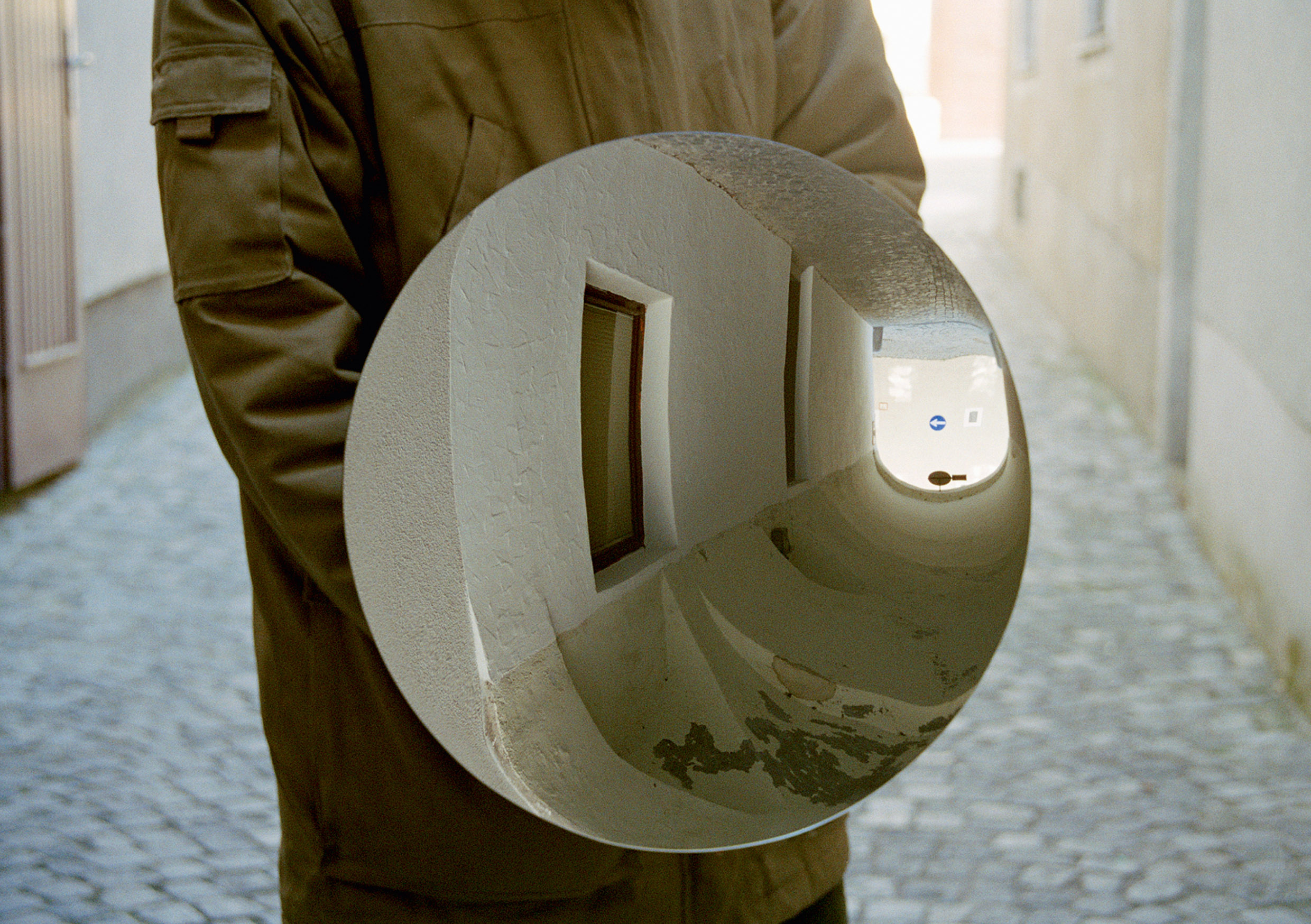MIND / MIRROR / CALF
Georgia Creimer’s work Linse – a series of photographs emerging in loose order since 1999 – composes a major component of the show Mind / Mirror / Calf. In this series, the artist works with the concave mirror as an ambivalent object, an object that is subject to various modes of viewing and, depending on each given case, an object that is perceived as either integrating or decontextualizing. Round, curved inwardly and hollow, depending on the viewer’s position, the concave mirror projects the reflected objects turned 180 degrees, or even disintegrates and transforms them into abstract ornamental patterns. The concave mirror appears to lead its own illusionist life reminiscent of the animistic pictorial references to nature in fetish objects. Creimer photographs the mirror in various environments so that it, on the one hand, becomes the carrier of abstract visual messages, and on the other hand, also surprisingly opens the image space, at times presenting entirely different excerpt of the world.
The concave mirror is transformed into a surreal object of knowledge par excellence, in that visible reality is made unrecognizable and, in its warped form it is brought into the image; for the eyes, a kind of “natural” collage is created. Psychologically interpreted, the mirror introduces an organic mode for representation in contrast to the rhetoric of the right angle, bringing the shown objects into flow and transferring them to a different degree of reality: A wall of cobblestones bulges oddly outwardly, as if it were about to leak; or a section of a forest appears to be torn open by a floating soap bubble in which amorphous branches and twigs are recognizable.
In looking at the photographs with a person carrying the mirror, one recognizes that it is less about the demonstration of special effects and more about the depth of insight that is made possible thanks to this instrument. Here, the mirror has a double function, both as a real protective shield and as a metaphoric “reflector of the soul”.
In Art History, the round form of the mirror can on the one hand be traced back to the earliest round portraits (tondi), which were already in use in Antiquity especially in architectural contexts, with an ambivalent character between relief and sculpture. On the other hand, the round mirror itself is an exceptional object with its own history. Parmigianino’s famous Self Portrait in a Convex Mirror (1523/24) in the Kunsthistorisches Museum in Vienna, for instance, brings these two aspects together: As a tondo, the mirror depicts the portrait of the artist – the surface of the painting is congruent with the mirror, thereby becoming one with it. While the centering of the image on the human being in the convex mirror still refers to an anchored humanistic view of the world unbroken in cosmos (only the edges of Parmigianino’s painting, for example, the distortion of the hand, point to the dissolution of this view), Georgia Creimer’s use of the concave mirror corresponds with a decentralized – consequently post-modern – perspective. Far beyond the conventional space of the present, her tondi, as images within an image, tend to dissolve boundaries; they are the bearers of another construction of reality.
Already in her earlier works, Georgia Creimer explored formations of hybrid adjustments conforming objects to their natural condition, for example in her group of works Naturezas, also consisting of the three objects Kalb. This circumstance of being “in between” is also significant for Creimer’s work in general: Her sculptures, objects, paintings, and photographs border between being amorphous and abstract, between inorganic and organic – and are thereby part of a discourse that allows knowledge processes to “come alive” in a alternating transfer between art and life sciences detached from the dualism of the discourse about culture versus nature.
Text: Patricia Grzonka
